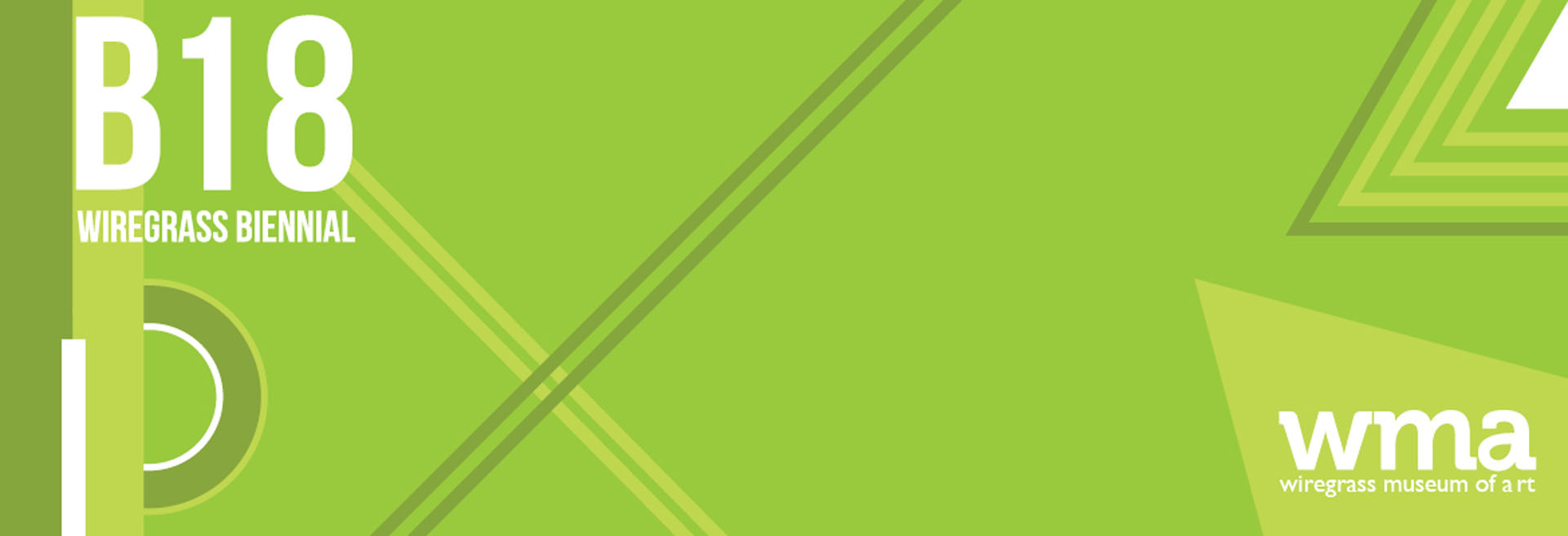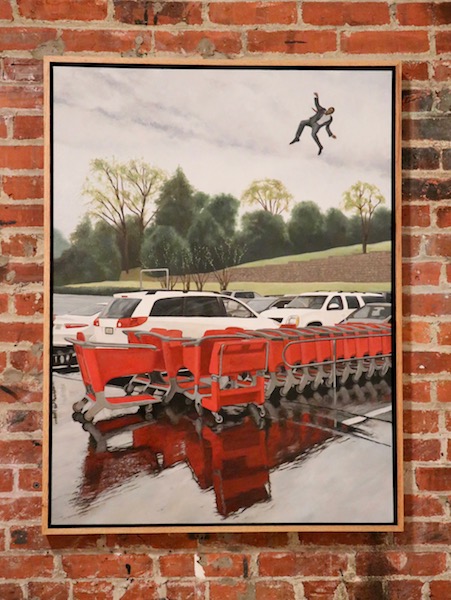
Get to know the artists of ‘B18: Wiregrass Biennial’ – Part 1
WMA asked several of the 41 artists whose work is currently on display in B18: Wiregrass Biennial to answer questions about their artistic practice. Get to know them better during the next few posts here on the #wmaINSPIRED blog.
Tom Wegrzynowski – Tuscaloosa, Alabama

The Death of Caesar, 2017
Oil on canvas
WMA: Tell us about your work in B18.
My piece in the biennial is an oil painting titled The Death of Caesar. It’s part of a body of work that addresses the unstable nature of meaning, especially as it relates to popular culture, history, and mythology. I like to appropriate from a wide range of sources, including my own photography, and look for combinations of elements that create different possibilities for what they might mean to the viewer. In that respect the paintings often function as a kind of Rorschach test. Given the way information is manipulated in our current political discourse, I find this idea really compelling and terrifying.
WMA: What is your experience working with WMA? Have you shown work at the museum before? How did you hear about the exhibition?
This was my first time showing and visiting the WMA. I was impressed with the space as well as the work selected for the exhibition. It was a very strong show. I’ve known about the museum from friends and colleagues who have shown there at one time or another.
WMA: Do you often participate in juried group shows like B18? Why or why not?
I do apply to a handful or juried shows every year. I find it’s a nice way to show work in a region that I might not otherwise be able to visit, as well as an opportunity to show in a professional gallery or museum environment.
WMA: How long have you been making art? Did you grow up in a school system with a strong arts program? Did someone in particular encourage you to develop your practice?
I’ve enjoyed drawing my whole life, though I did not take a formal art class until I was in high school. I was fortunate that the high school I attended for the last two years had a strong art program and my high school teachers were important mentors and advocates. My parents were always supportive of my interest in art and that really helped as well. My father is a painter and I have early memories of his easel and the glorious smell of turpentine.
WMA: In your opinion, why is it important for communities (both large and small) to have a thriving arts community? Have you chosen to move to a town because of its support of the arts/artists?
An art community is one of the places where people of different backgrounds can interact, especially through exhibitions of diverse artwork. I was involved in an art collective in Atlanta called the Concept Union and that was an important formative moment for me. Through the exhibitions we mounted we were able to include people who were not necessarily “art” people and those were really positive, empowering experiences. I firmly believe that the disorientation created by our current dysfunctional media culture stems from a fundamental lack of empathy. An art community is one way to hear and experience different narratives and gain some perspective. Art is what brought me to Tuscaloosa, where I have the good fortune to teach at the University of Alabama. Prior to that I always considered culture to be one of the motivating factors in my desire to live in cities.
WMA: Where do you find inspiration? What (Who) has the most influence on the art you make?
My inspiration comes from many different places. Sometimes it just gets beamed into my head. Teaching Art History has been an important influence in understanding the symbology of art and how the interpretation of artworks changes over time. I explore an expansive set of ideas in my painting that forms a meta-narrative, so frequently the work feeds itself. My wife, Charlotte, is also an artist and we talk about each other’s work constantly. She has an important influence in that I’m always bouncing ideas off her and I trust her when she tells me something either works or needs a little longer in the creative oven.
WMA: Anything else you’d like our visitors to know about you or your work?
I am an art educator and I feel strongly that everyone should find their creative outlets. People need to make art.
View More Stories
